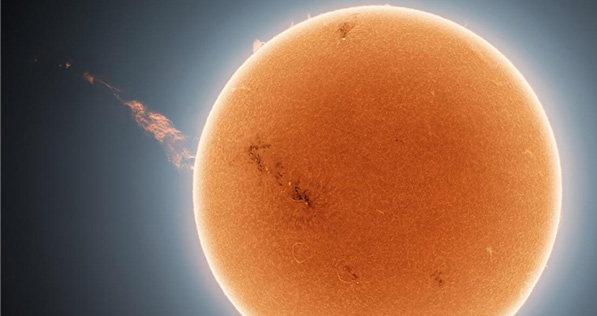We have been talking about the sun for some time now, about the terminartor effect and about its sunspots or its high activity, this time it was about an unusual eruption.
On Saturday, August 5, 2023 the sun made a strong solar flare, which reached its maximum point at 22:21 GTM, according to the NASA space agency, which through its Solar Dynamics Observatory was able to capture an image of this event.

The image shows a subset of extreme ultraviolet light highlighting extremely hot material from the eruptions that is colored in red and orange, the space agency reported Monday.
Solar flares are bursts of plasma energy that can affect radio communications, power grids and radio navigation signals, damage power grids and navigation signals, and pose a risk to satellites, the ISS and other stations as well as astronauts themselves.
NASA is monitoring solar flares, and in general the star itself, to rule out risks, currently the flare has a rating of X1.6. The categories depend on the energy released; there are five categories.
As we have already explained before, the sun presents cycles of eleven years on average, since its activity varies between what is called solar maximum and minimum.
Eruptions or flares are not the same as sunspots, because although there is a relationship between them, sunspots are the storehouse that provides the energetic supplies for eruptions. While flares are bursts of energy in the Sun’s photosphere, they are seen in a telescope as small glowing filaments.

When there is a time of high magnetic activity, numerous eruptions occur and they are gigantic, some ranging from 1000 or 2000 kilometers per second, and of course they could reach the Earth. But don’t worry, as we have already discussed, it is very rare that one strong enough to damage society arrives, but it is not impossible.






















